Australasian Bittern
Australasian BitternBotaurus poiciloptilus | |
|---|---|
| Kingdom: | Animalia |
| Phylum: | Chordata |
| Class: | Aves |
| Order: | Ciconiiformes |
| Family: | Ardeidae |
| Status | |
| World: | Endangered (IUCN) |
| Australia: | Endangered (EPBC Act 1999) |
| Victoria: | Critically Endangered (FFG Threatened list 2024) |
| FFG: | Listed |

of Richard Hall photography
The Australasian Bittern (Botaurus poiciloptilus), sometimes referred to as the Brown Bittern is a seldom observed, well camouflaged and elusive species.
The Australasian Bittern is one of three similar species that inhabit wetlands in south-western Victoria, the other two being the Nankeen Night Heron (Nycticorax caledonicus) and the Little Bittern (Ixobrychus minutus), particularly the juvenile plumage of these birds, but both being noticeably smaller than the Australasian Bittern.
The Australasian Bittern stands nearly a metre tall with a head and body length of up to about 75 cm. It is a thick set bird, mostly mottled brown, darker above with a creamy buff and brown streaked underside with a white throat and dark brown streaks along the side of the neck. In flight it has a general brown appearance with a large wingspan just over a metre.
Distribution
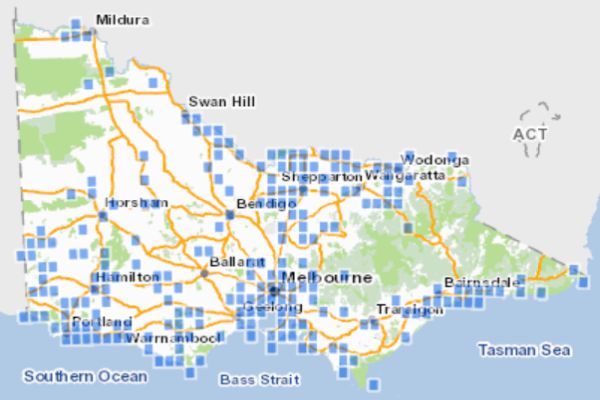
Source: Victorian Biodiversity Atlas, DELWP, 2022
The Australasian Bittern inhabits well vegetated wetlands from southern Queensland, through New South Wales, Victoria, to south-eastern South Australia along with more isolated populations in Tasmania and south-west Western Australia. Populations also exist in New Zealand and New Caledonia.
Ecology & Habitat
The Australasian Bittern has been recorded from both inland and coastal freshwater wetlands but many of these records are old and more information is required to ascertain the present day occurrence of this species.
The Australasian Bittern is considered to be partly nocturnal as it actively forages pre dawn and dusk. It can also be observed during daylight hours, particularly during the breeding season October to February (BirdLife International 2008) where it usually forages in shallow water up to 30 cm deep with dense wetland vegetation containing sedges, rushes, cumbungi or the common reed Phragmites.
Under suitable conditions when wetlands are more prolific populations can increase dramatically with the bitterns taking advantage of short-lived wetlands (Garnett and Crowley 2000). The population inturn shows declines after years with less desirable rainfall (BirdLife International 2008). Although generally sedentary the bittern will migrate in response to flooding or drought (Garnett & Crowley (2000).
There appears to be a lack of information on breeding and nesting ecology regarding the Australasian Bittern but it is generally accepted that a usual clutch size is 3-6. Nests are constructed in shallow water by trampling reed vegetation into a platform containing the nest.
Population Status
A nomination for listing the Australasian Bittern as Endangered under the Environment Protection Biodiversity Act 1999 has been prepared. This document estimates there has been a decline in area of occupancy over 70% in last 30 years and that the total population in Australia might not be more than 1000 birds (EPBC Act nomination 2009). Also the IUCN Red List indicates that the Australasian Bittern population is in a declining trend (BirdLife International 2008).
Two years of surveys between 2008 -2010 undertaken by Birdlife Australia on all wetland where Australasian Bitterns were known to occur in the 10 years prior to 2008 was used to estimate the population which could be as few as 86- 248 birds Victoria and 247-796 across Australia.
The decline in this species is reflected in both the population decline and area of occupancy (loss of habitat). The population decline of this species has been occurring for a number of decades with a long-term rate of decline estimated to be 20 – 30 per cent over two generations (11 years). The area of occupancy of the Australasian Bittern in Australia is thought to have declined by 70 per cent (Commonwealth of Australia 2019)
In Victoria, the Victorian Flora and Flora Guarantee Act Scientific Advisory Committee submitted a final recommendation for listing of the Australasian Bittern in 1997. The committee considered that information on the Australasian Bittern is insufficient and the species population is in decline (SAC, 1997).
The conservation status of Australasian Bittern was raised from Vulnerable to Endangered under the EPBC Act 1999 in March 2011 (EPBC 2011).
The conservation status of Australasian Bittern was re-assessed from Endangered in 2013 to Critically Endangered in 2020 as part of the Conservation Status Assessment Project – Victoria (DELWP 2020).
The conservation status of Australasian Bittern is now Critically Endangered in Victoria (FFG Threatened List, 2024).
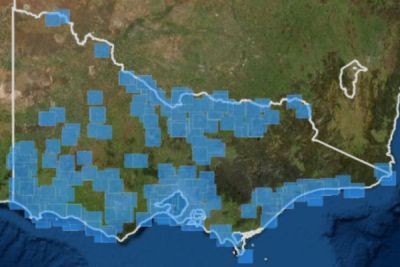
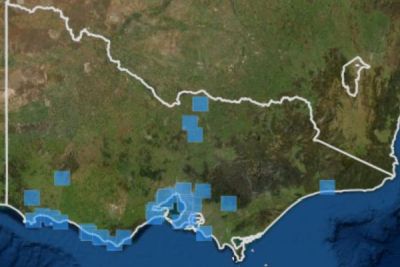

Threats
Factors which impact on the survival of the Australasian Bittern
Degradation of wetland habitat through changed water regimes
This could be due to drought, drainage of wetlands or changes within the catchment which either reduce or pollute water flow into wetlands, the net result being degraded habitat for the Australasian Bittern. A combination of drought and manipulation of natural water flows can have a dramatic impact on wetland health which in turn impacts on the viability of Australasian Bittern occupancy.
Ephemeral wetlands should be left to dry out in warmer months rather than be permanently full. Provided there is not excessive grazing or cropping, the natural cycle of wetting and drying provides control of tall marsh vegetation and allows the marsh to develop areas of open water between vegetation.
Salinisation
Degradation of the freshwater water table through over harvesting of water resources, poor catchment health including erosion, saline runoff and removal of native vegetation can contribute to rising salinity levels in wetlands. This can result in changes to the ecology of wetlands through reduced diversity of plants and animals, loss of freshwater wetland vegetation and a decline in the viability of wetlands for the Australasian Bittern.
Loss of wetland habitat caused by grazing
This has a direct impact on the Australasian Bittern through loss of foraging areas, loss of nesting habitat, reduced abundance of food and increased predation by foxes.
Predator species
The introduced Red Fox is considered a major predator species, particularly eggs, chicks and immature birds before they can fly.
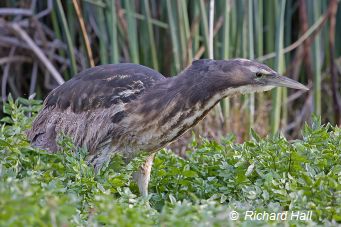
Foxes and cats can prey on the Australasian Bittern
Image: Richard Hall photography
Conservation & Management
Suggested Management Actions
Management and restoration of wetland habitat and Australasian Bittern breeding sites in Victoria.
- Restoration of wetland habitat that has been depleted due to human disturbance, by ensuring suitable water regimes are re-established and maintained. In some cases, the use of sandbags placed in drains can be enough to restore drained wetlands.
- Protection of wetlands and breeding sites on privately owned land in Victoria, through conservation covenants under the guidance of Trust for Nature or Wetland Tender and through Local Government Planning provisions.
- Management of agriculture practices surrounding wetland habitat to reduce agricultural runoff and livestock grazing and trampling of vegetation.
- Review of current local government policy of wetland drainage practices for urban development.
- Strict planning regulations for new developments in close proximity to wetlands.
Protection against introduced predators, specifically foxes
- Baiting and trapping of introduced predators in areas supporting breeding populations, on both public and privately owned land.
- Further investigation of predator control methods to effectively control foxes and feral cats.
- Further studies investigating the impact of foxes and other introduced predators on population fecundity and chick success.
Research, surveying and monitoring of populations in Victoria
- Further research on the ecology of the Australasian Bittern.
- Determine if there are any other factors that may limit or threaten survival of the Australasian Bittern.
- Conduct intensive surveys on species distribution, population status and breeding data. Australasian Bittern Survey
- Examine the merits of a captive breeding and release program for wetlands that have been re-instated and subject to protection.
Increase community awareness and participation in conserving wetlands and the Australasian Bittern
- Inform local communities about presence and importance of threatened species such as the Australasian Bittern
- Encourage community groups and organisations to become involved with the conservation of wetlands.
- Encourage the public, community groups and bird associations to collect data on sightings of bitterns.
- Provide assistance, management advice, information, resources and funding to private land holders who have wetland and bittern breeding sites on their land.
- Promote and inform the public on placing covenants of privately owned land for conservation of wetland habitat.
Australasian Bittern Recovery Project
The Australasian Bittern Recovery Project is being undertaken to meet the objectives of the Draft National Recovery Plan with support from the Commonwealth of Australia working with the National Recovery Team. Objectives:
- Demonstrate, by 2030, an upward trajectory in the abundance of mature individuals comprising populations at key wetlands compared to 2019 baseline counts
- Critical habitat is being managed to meet the ecological requirements of the Australasian Bittern.
Survey efforts are focused on monitoring the species through eco-acoustics and thermal drones which are more efficient than undertaking often difficult and long visual observations.
Habitat improvement through the use of environmental water has already been noted to have a positive impact. Early replenishment of wetlands encourages males to establish territories. Maintaining water-levels allows females to initiate egg laying by females and supported young through to fledging.
Bittern project overview - Birdlife Australia
Bitterns on Farms Project
Jean & Chester Porter Bitterns on Farms Project
Bitterns on Farms Project is a partnership project between the Heytesbury District Landcare Network and Birdlife Australia.
The main activities involve:
- Finding bitterns – undertake surveys of wetlands, habitat assessment and locate site where bitterns are found. Surveys are carried out with the help of local landholders, Timboon Field Naturalists Club, Heytesbury Landcare members and supported by Birdlife.
- Documenting threats to bitterns and their habitat
- Develop on-farm management plans with interested landholders
- Assist in leveraging funding to support bittern conservation

More information: Bitterns on Farms Project
Bitterns on Farms Project – Newsletter Issue 1
Bitterns on Farms – Newsletter, Issue 2
Contacts:
Chris Purnell - Birdlife Australia
Bitterns on Farms project SW Grampians

Occurrence modelling in SW Grampians
Shadow in the Reeds (2023) - Birdlife Australia
Lessons that we can learn from Australian’s dedicated to saving the Australasian Bittern.
Projects within North Central CMA area
This project is part of the Australasian Bittern Recovery Plan. It is aimed at finding suitable wetlands on both public and private land in the North Central CMA area to create the environment which Bittern’s need to survive and thrive.
Landholders who have a wetland on their property, no matter how small are encouraged to consider incentive funding available through the NCCMA.
A large proportion of Australian Bittern habitat in the NCCM area is on the Loddon Plains with about 1600 wetlands and half of them on private property.
Lake Cullen on the Kerang Wetlands has been identified as a key area with 16 Bitterns counted in a survey in 2017.
Past projects
The Bittern recovery project in the Glenelg Hopkins CMA area commenced in 2019 and finished in 2023. Key aims of the project were:
- increasing knowledge of the species in the Glenelg Hopkins CMA region through surveys
- protecting and improvements to habitat through incentives for improved management and wetland restoration
- working with the Gundidj Mara traditional owners to improve structural diversity in dense reedbeds through traditional burning.
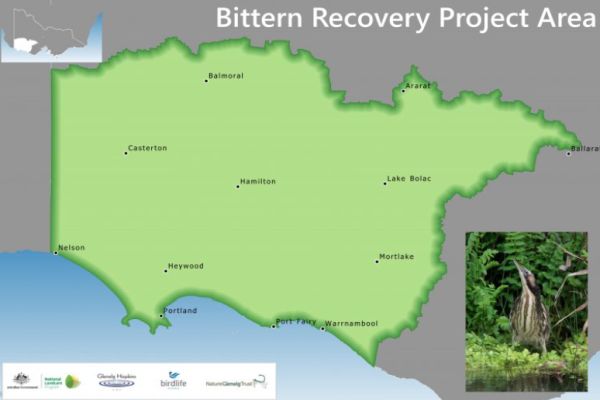
Key outcomes of the Bittern Project
The Bittern Project has been a huge success in achieving the above aims. This has meant the Australasian Bittern is now in a much better position for its future conservation, particularly within the GHCMA area. Key outcomes:
- The extent of habitat for the Australasian Bittern has increased by restoring 77 ha of habitat previously lost through drainage
- The quality of Australasian Bittern habitat is improved by:
- Best management practices and mitigation of key threats through funding incentives to landholders totalling 308.8 ha at 43 sites
- Utilisation of Aboriginal fire management practices on 19 ha of habitat to regenerate optimal habitat
- Blocking of artificial drainage at three Bittern habitat sites to prolong seasonal inundation, agreements with 12 landholders to improve the management of suitable Bittern habitat.
- Increased community awareness through training/workshop events, interactions and negotiations with stakeholders, monitoring, Bittern surveys, stock exclusion fencing, fox control, identification of potential Bittern sites and the production of communications materials.
- Identifying an optimal survey period for Australasian Bittern (September to December, focusing on the time between 5am to 7am.
- Bittern surveys using acoustic monitoring and citizen science comprising 712 surveys which has helped to unknown breeding habitat in the region; successful nesting detected multiple times; long-term monitoring established at priority sites. The discovery of two nests during one of the breeding seasons demonstrates that the area is more important for breeding than was assumed.
Adapted from: Glenelg Hopkins CMA Regional Land Partnerships Program Projects Independent Evaluation Report, May 2023.
https://www.facebook.com/bitternrecovery/
Contact e-mail Jacinta Hendriks Glenelg Hopkins CMA
Phone: 0408 793 326
Lachlan Farrington Nature Glenelg Trust
Phone: 0401 208 717
References & Links
BirdLife International (2008) Botaurus poiciloptilus. In: IUCN 2012-13 IUCN Red List of Threatened Species. Version 2018-2. Accessed 07 December 2018.
DCCEEW (2024) National Recovery Plan for the Australasian Bittern 2023 | Department of Climate Change, Energy, Environment and Water.
Commonwealth of Australia (2019) Draft Recovery Plan - Australasian Bittern, 2019, Department of Environment & Energy,
FFG Threatened List (2024) Flora and Fauna Guarantee Act 1988 - Threatened List - June 2024 Department of Energy, Environment and Climate Action (DEECA).
DELWP (2020) Provisional re-assessments of taxa as part of the Conservation Status Assessment Project – Victoria 2020, Department of Environment Land Water and Planning, Victoria.
DEPI (2013) Advisory List of Threatened Vertebrate Fauna in Victoria – 2013, Department of Enviornment, Land Water & Planning, East Melbourne, Victoria.
EPBC Act nomination (2011) EPBC Act Listing advice to list in the Endangered Category 3 March 2011, pdf. Accessed 22 February 2017.
FFG Threatened List (2023) Department of Energy, Environment and Climate Action (DEECA).
Garnett, S.T. and Crowley G.M. (2000) Action Plan for Australian Birds 2000 – Recovery Outline, Australasian Bittern] Stephen T. Garnett - Queensland Parks and Wildlife Service, and Gabriel M. Crowley - Birds Australia, Environment Australia, 2000,ISBN 0 6425 4683 5
IUCN (2009) IUCN Red List of Threatened Species. Version 2018-2 – Australasian Bittern , (Accessed December 2018).
NPW Act (1972) National Parks and Wildlife Act 1972—22.3.2018 South Australia, Schedule 8 Vulnerable species (accessed 10 March 2014)
SAC (1997) Final Recommendation on a nomination for listing: Australasian Bittern (Botaurus poiciloptilus) (Nomination No. 425). Scientific Advisory Committee, Flora and Fauna Guarantee. Department of Sustainability and Environment: Melbourne.
TSC Act (1995) Threatened Species Conservation Act 1995, New South Wales, Schedule 1. (Accessed 7 Decemmber 2018) Threatened Species Conservation Act 1995
TSP Act (1995) Threatened Species Protection Act 1995, Tasmania, Threatened species list
BC Act (2016) Biodiversity Conservation Act 2016, Western Australia, Biodiversity Conservation Act (Specially Protected Fauna) Notice 2018). Schedule 2 — Fauna that is likely to become extinct as endangered fauna. Department of Biodiversity, Conservation and Attractions - Threatened animals.
VVB (2022) Visualising Victoria's Biodiversity vvb.org.au
More Information
Birds in Backyards - Australian Museum. 2018.
Australasian Bittern Survey (survey forms, calls and information) - Birdlife Australia.
Species profile and Threats Database - Australasian Bittern - Department of Environment & Energy, Australia.
Species Profile and projects – Australian Bittern - Department of Environment and Conservation, New South Wales.
SWIFFT Seminar notes: Nature conservation of wetlands in an agricultural landscape

